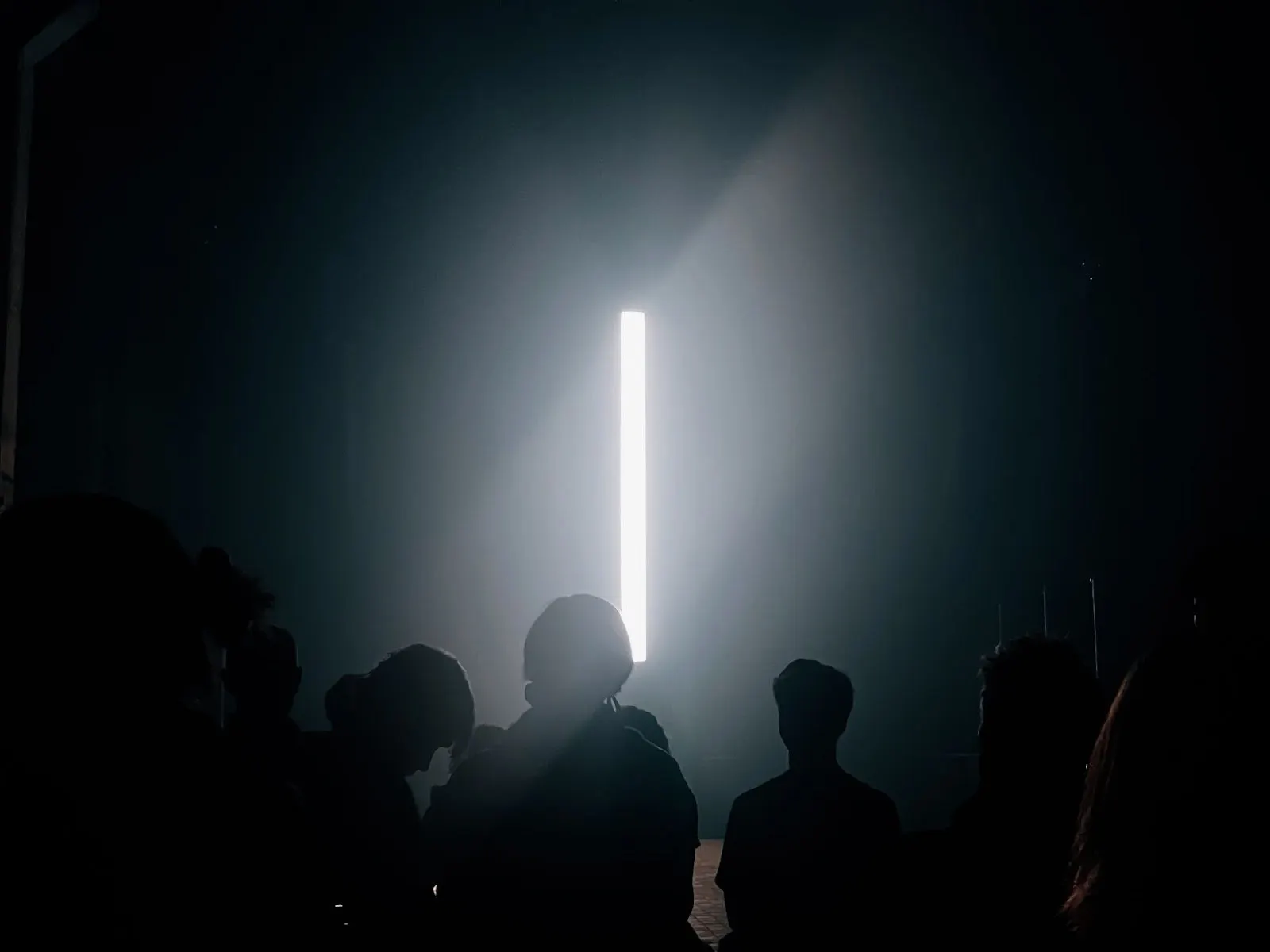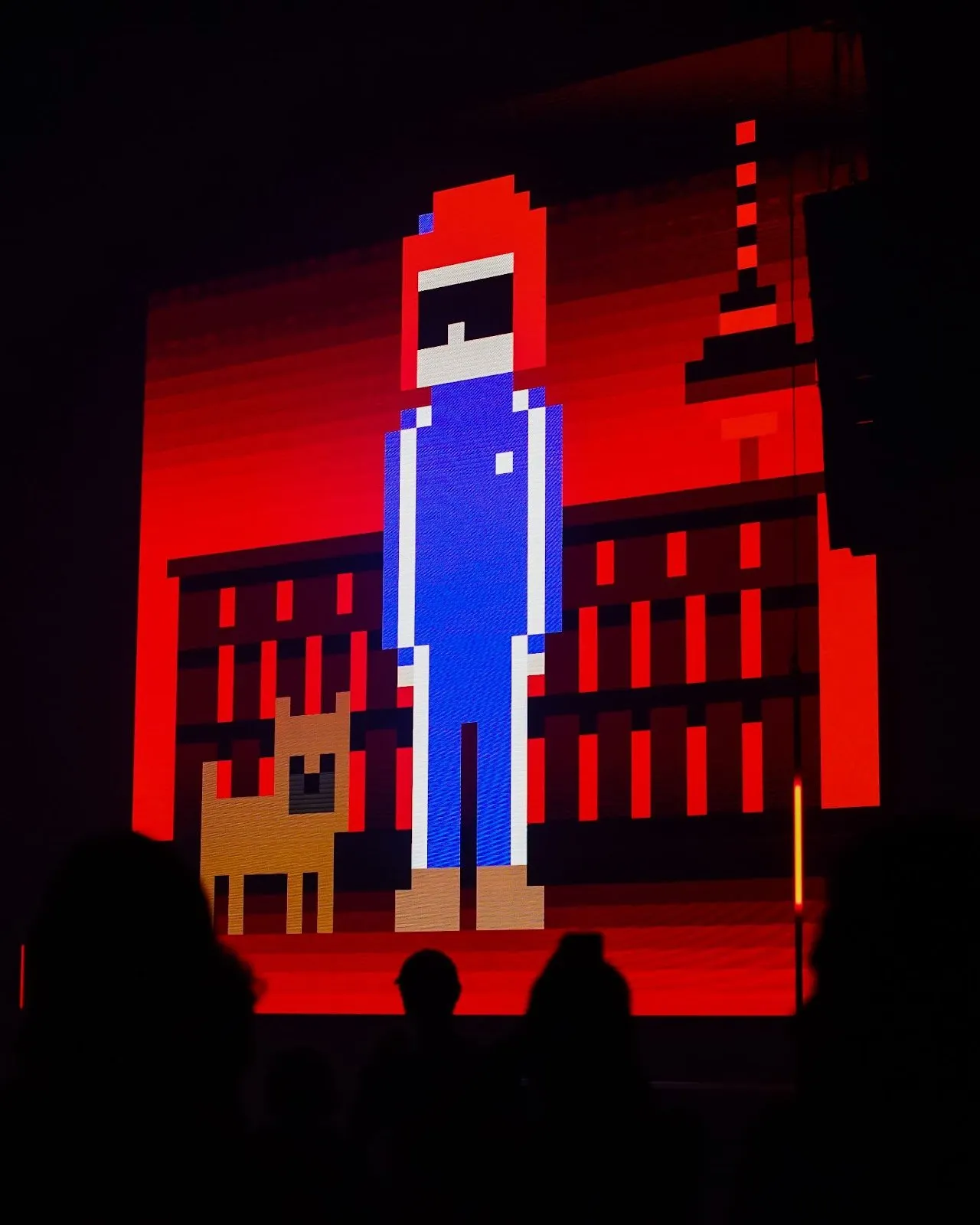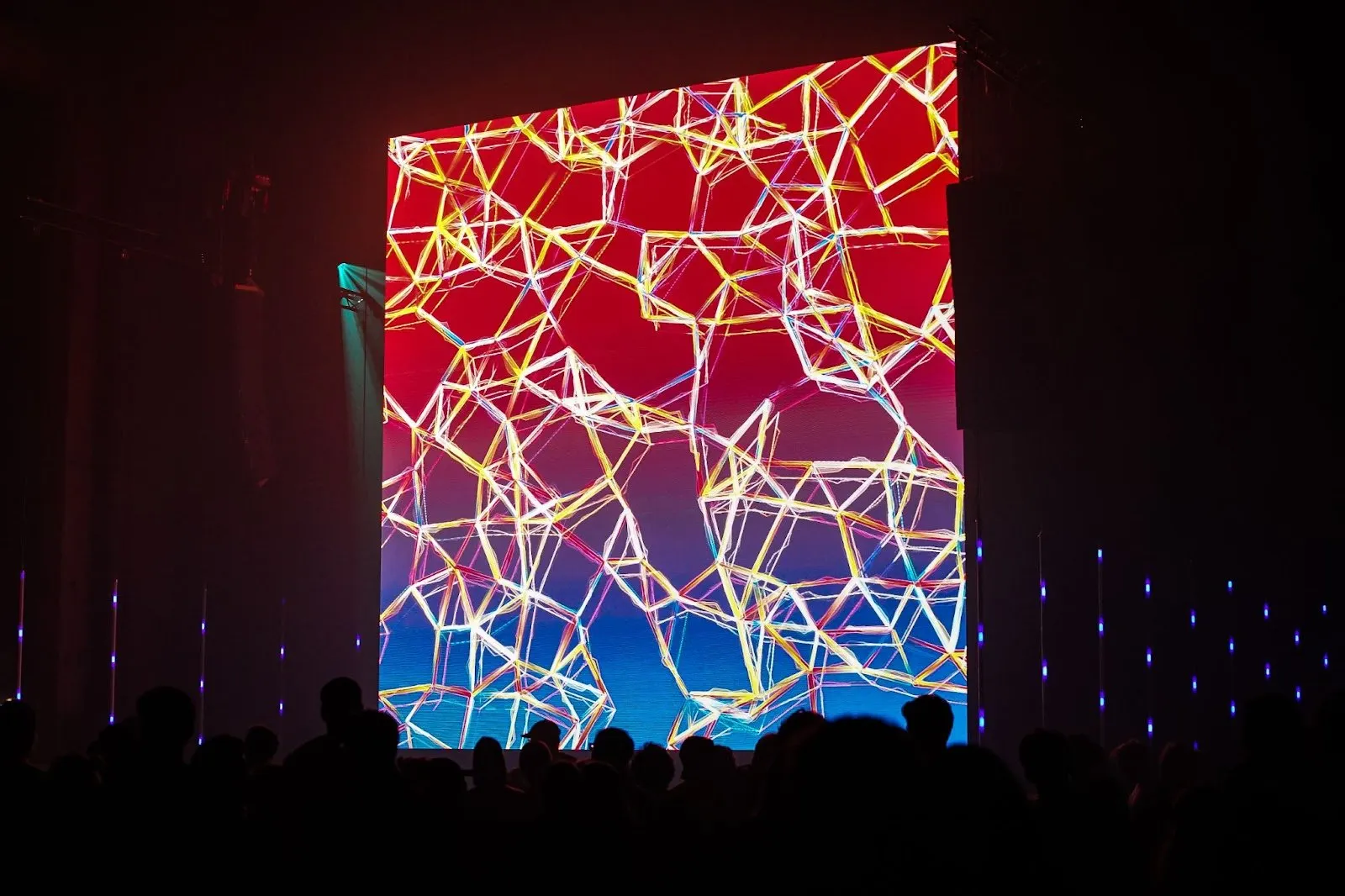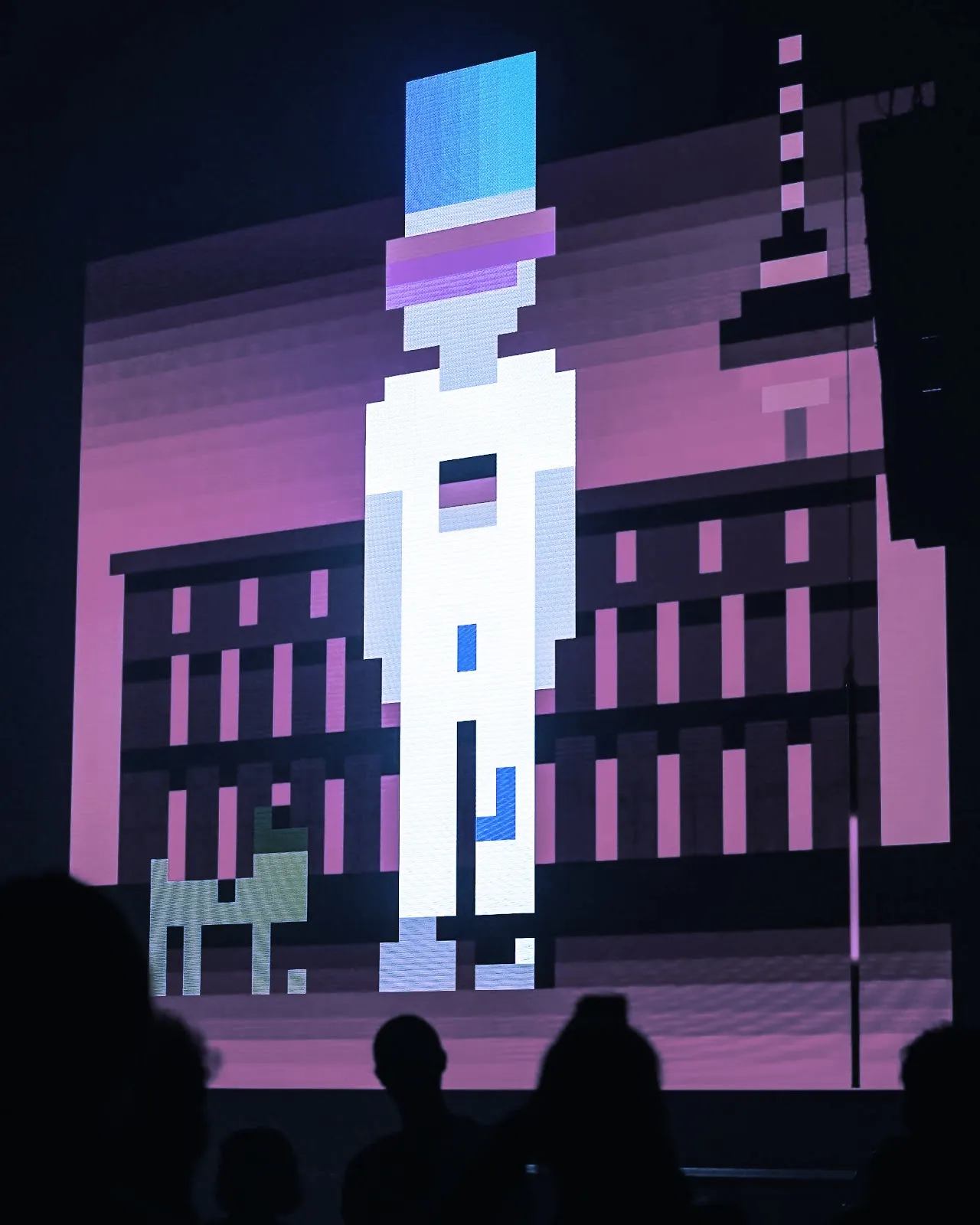When I met Seth Goldstein backstage on Saturday night, one of the masterminds behind the DAO-ified NFT art gallery Bright Moments, he was in an auction battle with NFT collector Pranksy.
The two were duking it out over an exclusive 1-for-1 multimedia piece from legendary composer Philip Glass and renowned theater director Robert Wilson. It’s a 20-minute clip from the duo’s roughly five-hour-long opera “Einstein on the Beach” and the first edition of the Bright Moments’ Icon Series.
“If he really wants it, he can have it,” said Goldstein. “But I’m willing to go to 30 Ethereum to get it.”
As Wilson’s archivist some 30 years ago at the Byrd Hoffman Foundation, the two have worked together to help translate the avant-garde director’s work into new mediums and formats. “My first job out of college in 1992 was working as Wilson's archivist for his Byrd Hoffman Foundation,” he said. “That was before the [commercial] web when I helped put some of his archives on CD-ROM.”
In this light, paying roughly $90,000 to own a piece of this translation is a small price to pay. It’s a cherished relic with clear sentimental value.

As the auction rages on, next door, in the massive cavernous space that is Kraftwerk, a crowd gathers to watch the NFT in action.
Like the original 1976 stage performance, a horizontal white bar takes up the entirety of the screen. Over the course of the clip, it slowly shifts vertically, then flies upwards, disappearing into the ether. Glass’s trance-inducing organ music accompanies the bar's ascent throughout its slow but steady transition.
Roughly halfway through the show, Goldstein wins the auction for 28 Ethereum—a bargain for a work that famed art critic John Rockwell described in 2012 as “mythical.”
Bright Moments DAO: Then and now
Though the Glass and Wilson NFT auction is a first for Bright Moments, NFT Art Berlin is the group’s fourth iteration.
And a whole lot has changed since the first real-life event in LA’s Venice Beach last spring.
More of a pop-up, the gallery is minuscule compared to Kraftwerk, formerly a power station for Berlin. Still, it was the beginning of what Goldstein calls a “leaderless gallery system.”
Bright Moments works like this: During each installation, participants can do a live, in-real-life minting of their very own CryptoCitizen. Created by digital artist Qian Qian, these little 8-bit NFT characters are inspired by the environment in which they are minted.
CryptoVenetians, or those minted during the Venice Beach pop-up, for example, are populated by the area’s eclectic residents—some are holding surfboards, others have roller skates. And so on.
Likewise, those who minted an NFT during the Berlin event get their very own CryptoBerliner.

Back in November, Bright Moments began selling so-called “Golden Token” mint passes needed to mint the CryptoBerliners at Saturday’s event. The sale was executed through a Dutch auction and raised more than 400 Ethereum on the fundraising platform Mirror. With these funds, the DAO bankrolled the Berlin event.
And not only do minters get to enjoy a slice of crypto art, but the NFTs also carry exclusive access to the Bright Moments DAO.
Members have played a key role in voting on where the next installation will occur.
So far, Bright Moments has taken the mobile gallery first to the metaverse with CryptoGalacticans, then Venice Beach, New York City, and Berlin. The gallery’s next destination is London this summer.
“I like to think of it like an operating system,” Goldstein told me. “With each installation, we add new modalities and components to the experience. New York had more of a traditional gallery feel whereas here in Berlin, we wanted to focus on the music.”
Step into the light 🔦 only 3 nights left to mint!
Not too late to get your CryptoBerliner...https://t.co/zbpQJUotMp pic.twitter.com/NIAOP1V4ZS
— cryptocitizens (@cryptovenetians) April 19, 2022
On each of the ten days of the Berlin event, an artist and their work were highlighted.
Called the Berlin Collection, each artist released 100 NFTs to be minted on the spot by guests. Artists included Holger Lippmann, Gabriel Massan, Michael Kozlowski, Boreta, Alida Sun, Jeff Davis, Lorenn Bednar, Jason Ting, Casey Reas, and Ellie Pritts.
The list of artists began with reaching out to Davis, and then snowballed into including other artists the Bright Moments team admired and who were also based in Berlin, Goldstein said. The team then added a “roster of [their] favorite Art Blocks generative artists.”
On the evening I arrived, the network art of Reas was on full display.

Besides the exclusive collections launched each night of the event, the bottom floor also included more well-known collections like CryptoPunks and several Bored Ape Yacht Club (BAYC) NFTs.
These NFTs were owned by members of the Bright Moments DAO who consented to display them, said Goldstein.
When NFTs come to life
Bright Moments is doing much more than just flipping jpegs. They’re bringing crypto to life.
There is something quite magical about attending a live minting of generative art. The digital and physical realms coming together to create something unique and amazing. https://t.co/aYcD9Zk7q2
— Fred Wilson (@fredwilson) April 7, 2022
They’re creating a richer experience not possible by simply following NFT chatter on Twitter or scrolling endlessly on OpenSea. Celebrating the minting process in real life adds yet another unique, non-fungible quality to the NFTs. This is something few other collections can boast.
And for a DAO with roughly 2,500 members strong, it’s already struck a serious chord.

